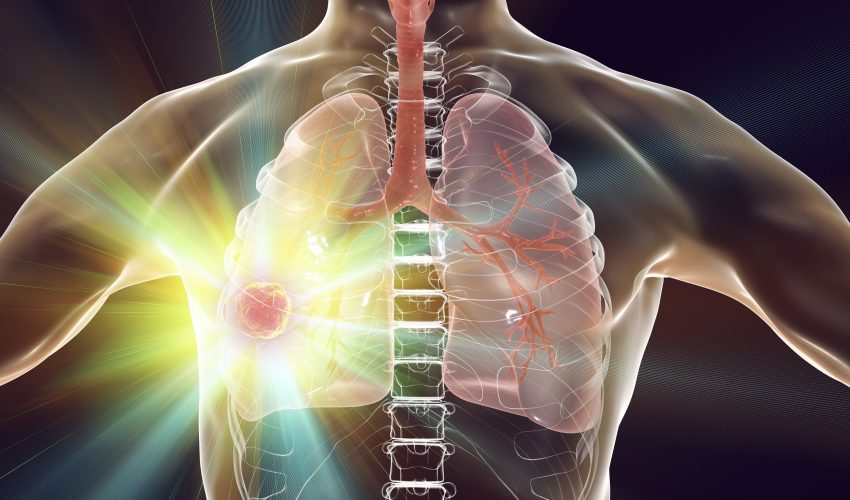Post Views: 2,326
ViewsDiagnosing and Treating Lung Cancer
Lung cancer is one of the most common types of cancer in the world. It is among the highest causes of deaths by cancer in both men and women in the United States. The disease itself is caused mostly by smoking or when a person exposes themselves to secondhand smoke on a regular basis. As the person smokes more cigarettes a day, and as they begin smoking at an earlier age, the risk of suffering from lung cancer will increase. Exposure to pollution, radiation, and asbestos may also increase this risk.
The lungs are the most critical part of our respiratory system. In other words, it is in these structures that the blood that our heart pumps every living second goes to become oxygenated before irrigating all the other organs in our body with valuable oxygen for them to perform their functions. It is in the lungs where carbon dioxide, a waste product created by our cells, is expelled from the body.
Cancer in the lungs is caused when there is a rapid growth of malignant cells in these organs. If it is not diagnosed in time, it could metastasize, which is a process where these cancerous cells spread to other organs in the body.
Causes
Aside from smoking, other factors may lead to the onset of lung cancer, which are:
Exposure to radon
Radon is a radioactive noble gas that is found in rocks and dirt, which is formed from the natural decomposition of radium. It is invisible and odorless, so that the only way to determine if one has been exposed to it is by measuring the levels of this gas in the immediate environment. If radon exposure is combined with smoking, the risk of developing lung cancer will increase significantly.
Exposure to carcinogens
Amianthium is one of the most dangerous industrial chemical substances, which is directly related to lung cancer. However, there are many other industrial carcinogens, such as uranium, arsenic, or certain oil-derived products.
Genetic predisposition
Some DNA mutations can lead to cancer in some patients. In these cases, these mutations can lead to the activation of “oncogenes,” or may cause the tumor-suppressing genes to remain inactive. These DNA mutations are passed down to subsequent generations, increasing their probability of suffering from lung cancer.
Work-related cancer agents
Among the occupations that are at risk of developing lung cancer, miners are one of the highest-rated in the world as they are more likely to breathe in carcinogens, such as uranium.
Many other causes may cause a person to develop lung cancer. However, the ones mentioned above are among the most common.
Symptoms
According to the Spanish Society of Medical Oncology, those who have lung cancer tend to suffer from symptoms that are the same, or similar, to other non-fatal diseases. These symptoms are the following:
- Fatigue
- Loss of appetite
- Coughs that can be dry or with phlegm
- Coughing up blood
- Breathing difficulties (dyspnea)
- Pain
In other cases, some patients might not even experience symptoms, and the cancer is usually detected through radiography of the lungs performed for other unrelated reasons. Unfortunately, doctors typically pick up the disease once the tumor has grown to cause significant discomfort to the patient. At this time, treating the disease is more complicated since it has progressed significantly.
Diagnosing Lung Cancer
Since the symptoms don’t manifest until the disease has evolved considerably, only around 15% of lung cancer cases are detected early. These early detection cases happen when the person is being tested for another unrelated disease, only to find the tumors growing in the lungs.
Once doctors spot the growth, the only way to honestly know if it is a malignant growth is by conducting a biopsy of the lung tissue. Through this study, the specialist will detect if it is cancer or another disease, and will obtain valuable information to arrive at an adequate treatment. If it turns out to be cancer, the doctor will need to perform other studies to determine if the disease has spread to other places, including a physical examination along with a thorough medical history. Other important tests to determine the extent of the cancer are a CT scan, X-rays, MRI, PET, sputum cytology, a needle biopsy, a bronchoscopy test, a bone marrow biopsy, and blood tests, among many others.
Treatment
Once the doctors establish severity and stage of the disease, they can begin treating it through standard procedures, starting with the excision of the tumor through surgery. Once they remove the malignant mass, treatment through radiotherapy, chemotherapy, and immunotherapy to eliminate every trace of cancer from the body may commence.
The success of the treatment will depend heavily on the stage of cancer when it was first discovered. The earlier it is detected, the better the chances of the patient to survive the disease. In this sense, cancer screening, especially for those who are at risk of developing the disease, is an integral part of any medical examination.
One comment on “Diagnosing and Treating Lung Cancer”
Leave a Reply
Diagnosing and Treating Lung Cancer
By nurseadvisorofficial
Lung cancer is one of the most common types of cancer in the world. It is among the highest causes of deaths by cancer in both men and women in the United States. Learn about the current methods and treatments for lung cancer available.














Thank you wery much for you help and attention